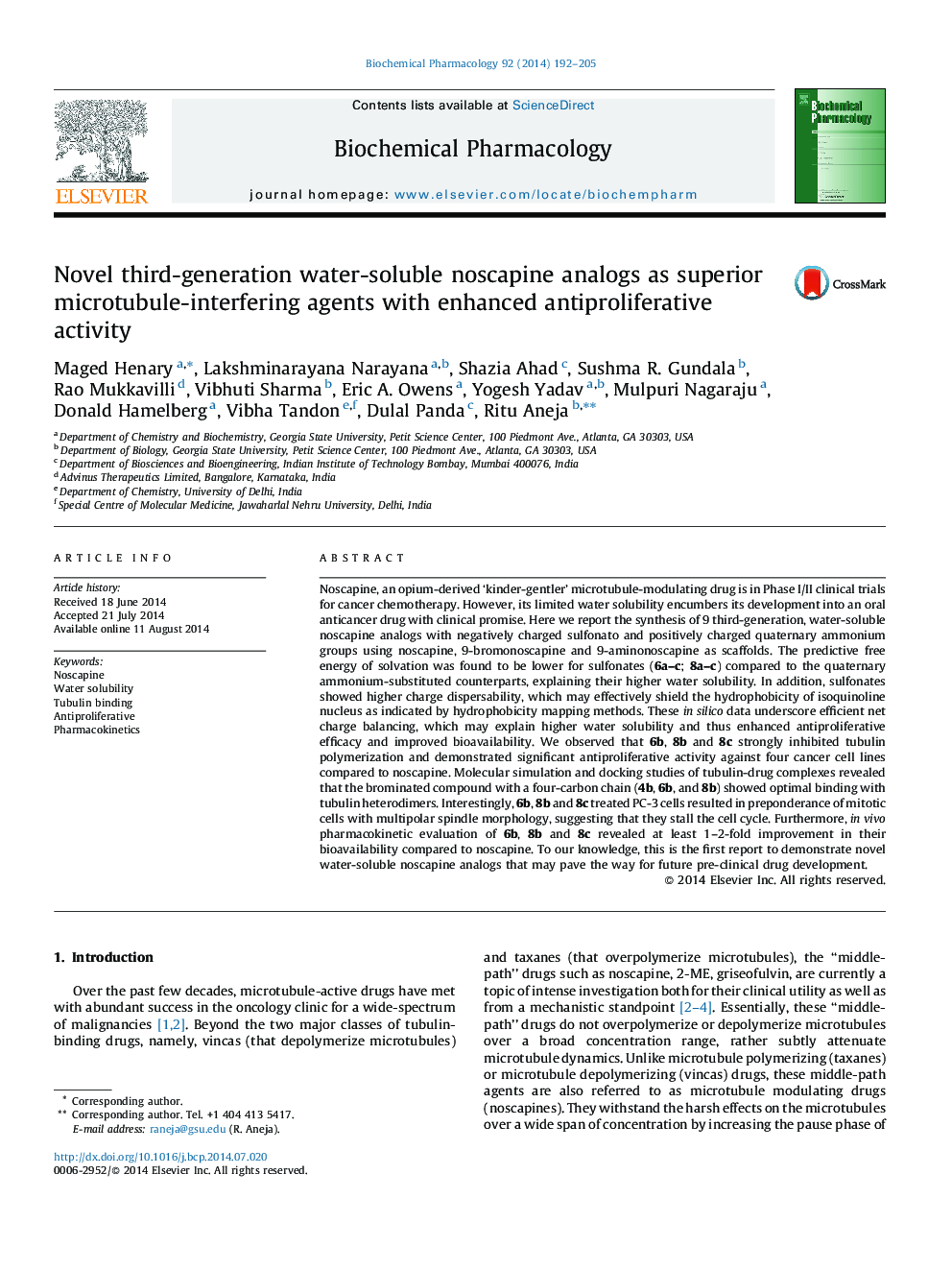| کد مقاله | کد نشریه | سال انتشار | مقاله انگلیسی | نسخه تمام متن |
|---|---|---|---|---|
| 2512137 | 1118319 | 2014 | 14 صفحه PDF | دانلود رایگان |
Noscapine, an opium-derived ‘kinder-gentler’ microtubule-modulating drug is in Phase I/II clinical trials for cancer chemotherapy. However, its limited water solubility encumbers its development into an oral anticancer drug with clinical promise. Here we report the synthesis of 9 third-generation, water-soluble noscapine analogs with negatively charged sulfonato and positively charged quaternary ammonium groups using noscapine, 9-bromonoscapine and 9-aminonoscapine as scaffolds. The predictive free energy of solvation was found to be lower for sulfonates (6a–c; 8a–c) compared to the quaternary ammonium-substituted counterparts, explaining their higher water solubility. In addition, sulfonates showed higher charge dispersability, which may effectively shield the hydrophobicity of isoquinoline nucleus as indicated by hydrophobicity mapping methods. These in silico data underscore efficient net charge balancing, which may explain higher water solubility and thus enhanced antiproliferative efficacy and improved bioavailability. We observed that 6b, 8b and 8c strongly inhibited tubulin polymerization and demonstrated significant antiproliferative activity against four cancer cell lines compared to noscapine. Molecular simulation and docking studies of tubulin-drug complexes revealed that the brominated compound with a four-carbon chain (4b, 6b, and 8b) showed optimal binding with tubulin heterodimers. Interestingly, 6b, 8b and 8c treated PC-3 cells resulted in preponderance of mitotic cells with multipolar spindle morphology, suggesting that they stall the cell cycle. Furthermore, in vivo pharmacokinetic evaluation of 6b, 8b and 8c revealed at least 1–2-fold improvement in their bioavailability compared to noscapine. To our knowledge, this is the first report to demonstrate novel water-soluble noscapine analogs that may pave the way for future pre-clinical drug development.
Figure optionsDownload as PowerPoint slide
Journal: Biochemical Pharmacology - Volume 92, Issue 2, 15 November 2014, Pages 192–205
